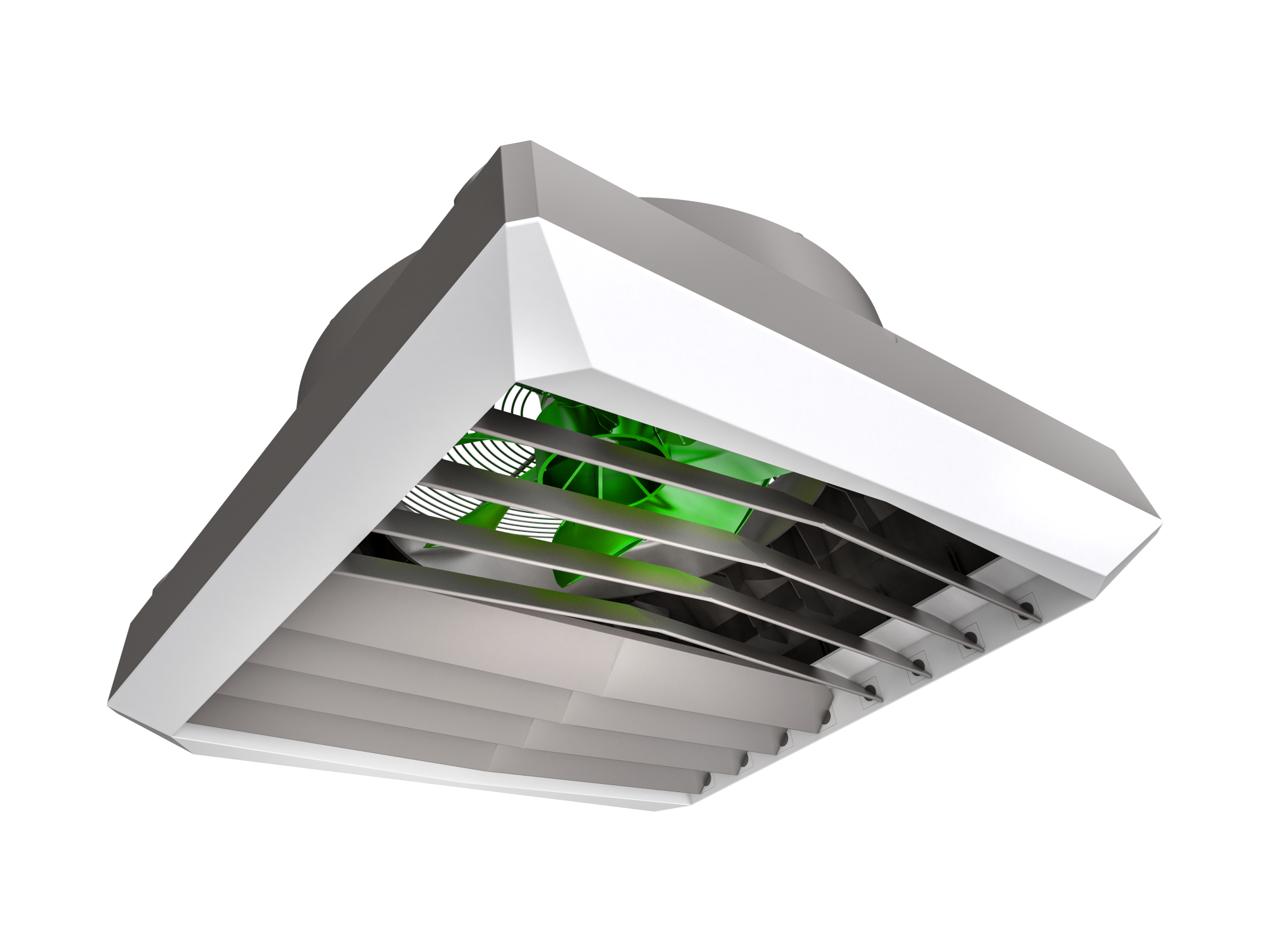What is destratification?
Heating large volume industrial, sports or commercial buildings using conventional radiator systems has many disadvantages. In addition to the long time it takes to raise the room temperature, due to the nature of convection, there is also a lot of heat loss. One of the causes of this is the rise of warm air and its accumulation under the ceiling, where it remains unused. Such losses are prevented by destratification.

Radiator heating and the disadvantages of convection
Standard central heating systems consist of pipes and heat exchangers and their central source, usually a central heating boiler. The heat energy is distributed throughout the building via a medium, which is either water or steam. The heat is transferred through pipes to heat exchangers, from where it is released to the building enclosure. Its distribution is determined by a natural physical phenomenon whereby lighter warm air rises, usually along the wall surfaces. When it reaches the ceiling, it cools and is displaced by new, warmer air flowing in. This pushes the slightly cooled air downwards into the occupied zone.
According to the principles of convection, in order to heat the lower part of the room, the warm air must travel in a circular mode. When it is below the ceiling, some of the energy escapes through the roof, which has a large surface area. In addition, the air cools as it travels, and by the time it reaches its destination it is already a few degrees cooler. From this description, convection results in layers of air at different temperatures. This is detrimental to the efficiency of the heating system, its cost and the time it takes to heat the room.
What is destratification?
The phenomenon described above is particularly unfavourable in high spaces, which include hall-type spaces of various types. One way of reducing it is by destratification. It consists of mixing the air in the upper areas of the room to force it downwards and upwards in the lower areas. The benefits of destratification are clear. In high spaces, it can save up to 30% of the heat loss.
The destratification device is a simple device similar to a classic ceiling fan. When the fan is activated, the destratification device draws in the warm air stored under the ceiling and forces it into the lower (usable) part of the space, while also causing the air in the central part to move to the sides. This forced movement ensures that the warm air flowing over the walls hits a barrier and does not rise to the ceiling. The forced air movement pushes it down towards the floor. As a result, the temperature gradient in the room is reduced. It should be noted that destratification does not completely eliminate temperature differences, and the air under the ceiling itself is still warmer than in other zones. It is therefore important to ensure that the ceiling is well insulated.
Design and types of destratification
Knowing what destratification is, it is possible to understand why installing a unit in a high bay can bring specific benefits. In order to maximise these benefits, it is essential to choose the right model of destratification unit, which can vary in terms of performance, for example. The design of the unit is very simple and includes:
- a fan, often housed in an enclosure cabinet,
- a fan unit,
- a steering device or directional nozzles.
On some models, the position of the fan blades can be adjusted so that the range can be set. Mounting the unit under the roof does not affect the comfort of the hall space. Its operation is quiet and its appearance is aesthetically pleasing to match the interior design.
Integrated or stand-alone destratification
Destratifiers can be installed independently on the ceiling as a stand-alone component controlled by its own application or by a wall-mounted controller. They can be integrated into a heating system or act as heating and ventilation units with a destratification function. A ceiling-mounted heater can also act as a destratification unit. The latter two solutions are not universal, however, as technical barriers can prevent their proper installation.
Control systems are an important part of this type of equipment. The operation of the fan can be adjusted continuously or in steps. Models integrated with central heating are equipped with temperature sensors that provide information on the distribution of air volumes in the unit. An electronic controller can be used to give instructions to change the unit's mode of operation according to the ambient conditions. Day and night operation is also possible. There are also destratifiers with a thermostat that activates the supply when a certain temperature is reached.
How to choose a destratification unit for a room?
Destratifiers can be installed in groups in large rooms. It is important to select them so that they cover the entire area of the room. The purpose of the units is to force warm air downwards into the occupied zone. However, the airflow should not be so strong that it is perceived as an unpleasant breeze. Manufacturers propose different methods for calculating the power and capacity of destratification units. Three-quarters of the height of the room is considered optimal. The choice should be based on the volume and requirements of the room. Ready-made formulae can be used to calculate the capacity of the units.
We invite you to familiarise yourself with the VOLCANO VR-D air destratifier units offered by the VTS Group. The units are available with AC and EC motors and their maximum capacity is 6500 m3/h.
 English
English Polski
Polski Germany
Germany LATAM
LATAM Bulgaria
Bulgaria Estonia
Estonia France
France Hungary
Hungary India
India Italy
Italy Kazakhstan
Kazakhstan Romania
Romania Czech Republic
Czech Republic Ukraine
Ukraine United Arab Emirates
United Arab Emirates Latvia
Latvia Lithuania
Lithuania United States of America
United States of America
 Turkey
Turkey